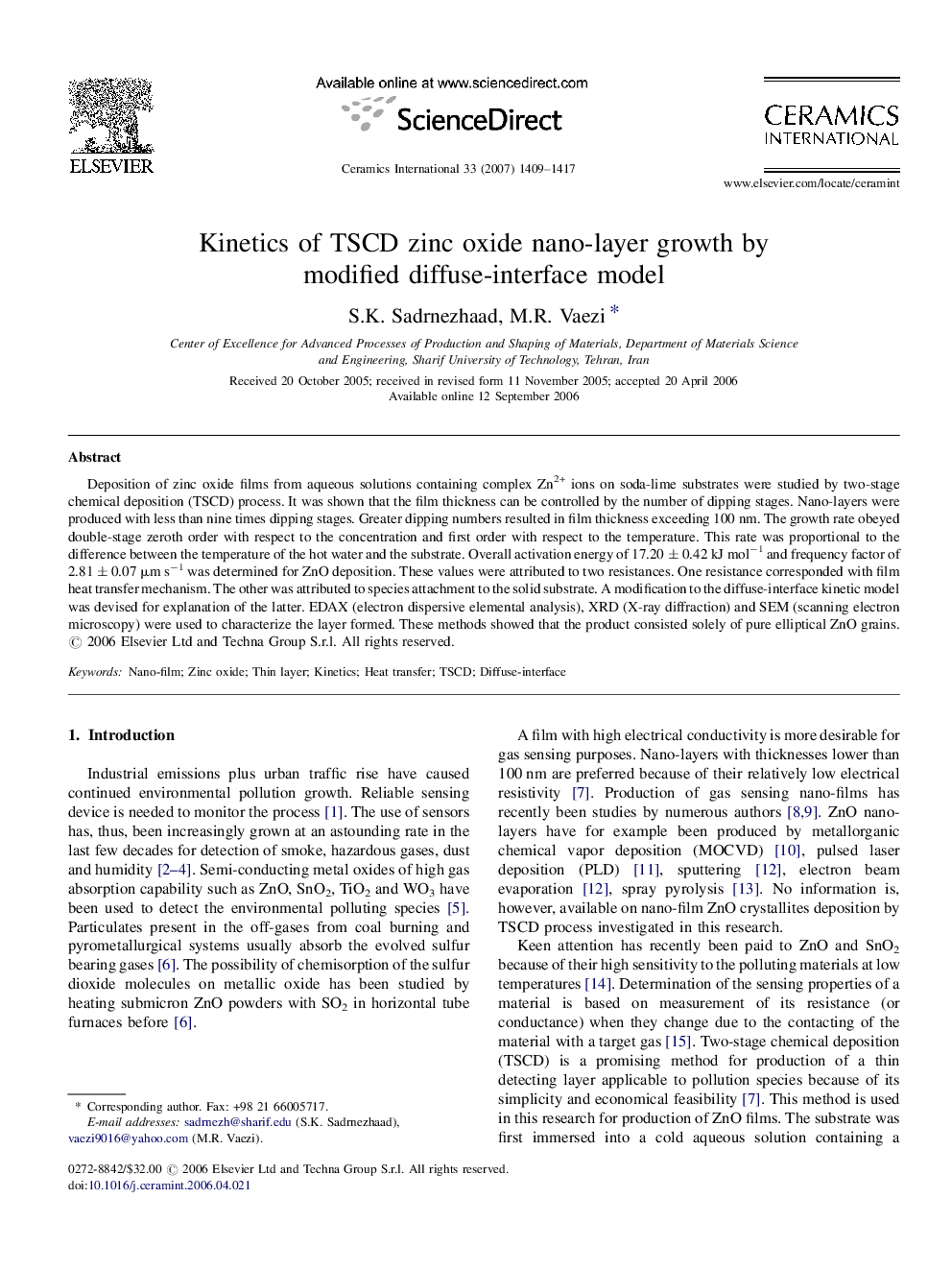| Article ID | Journal | Published Year | Pages | File Type |
|---|---|---|---|---|
| 1465510 | Ceramics International | 2007 | 9 Pages |
Deposition of zinc oxide films from aqueous solutions containing complex Zn2+ ions on soda-lime substrates were studied by two-stage chemical deposition (TSCD) process. It was shown that the film thickness can be controlled by the number of dipping stages. Nano-layers were produced with less than nine times dipping stages. Greater dipping numbers resulted in film thickness exceeding 100 nm. The growth rate obeyed double-stage zeroth order with respect to the concentration and first order with respect to the temperature. This rate was proportional to the difference between the temperature of the hot water and the substrate. Overall activation energy of 17.20 ± 0.42 kJ mol−1 and frequency factor of 2.81 ± 0.07 μm s−1 was determined for ZnO deposition. These values were attributed to two resistances. One resistance corresponded with film heat transfer mechanism. The other was attributed to species attachment to the solid substrate. A modification to the diffuse-interface kinetic model was devised for explanation of the latter. EDAX (electron dispersive elemental analysis), XRD (X-ray diffraction) and SEM (scanning electron microscopy) were used to characterize the layer formed. These methods showed that the product consisted solely of pure elliptical ZnO grains.
